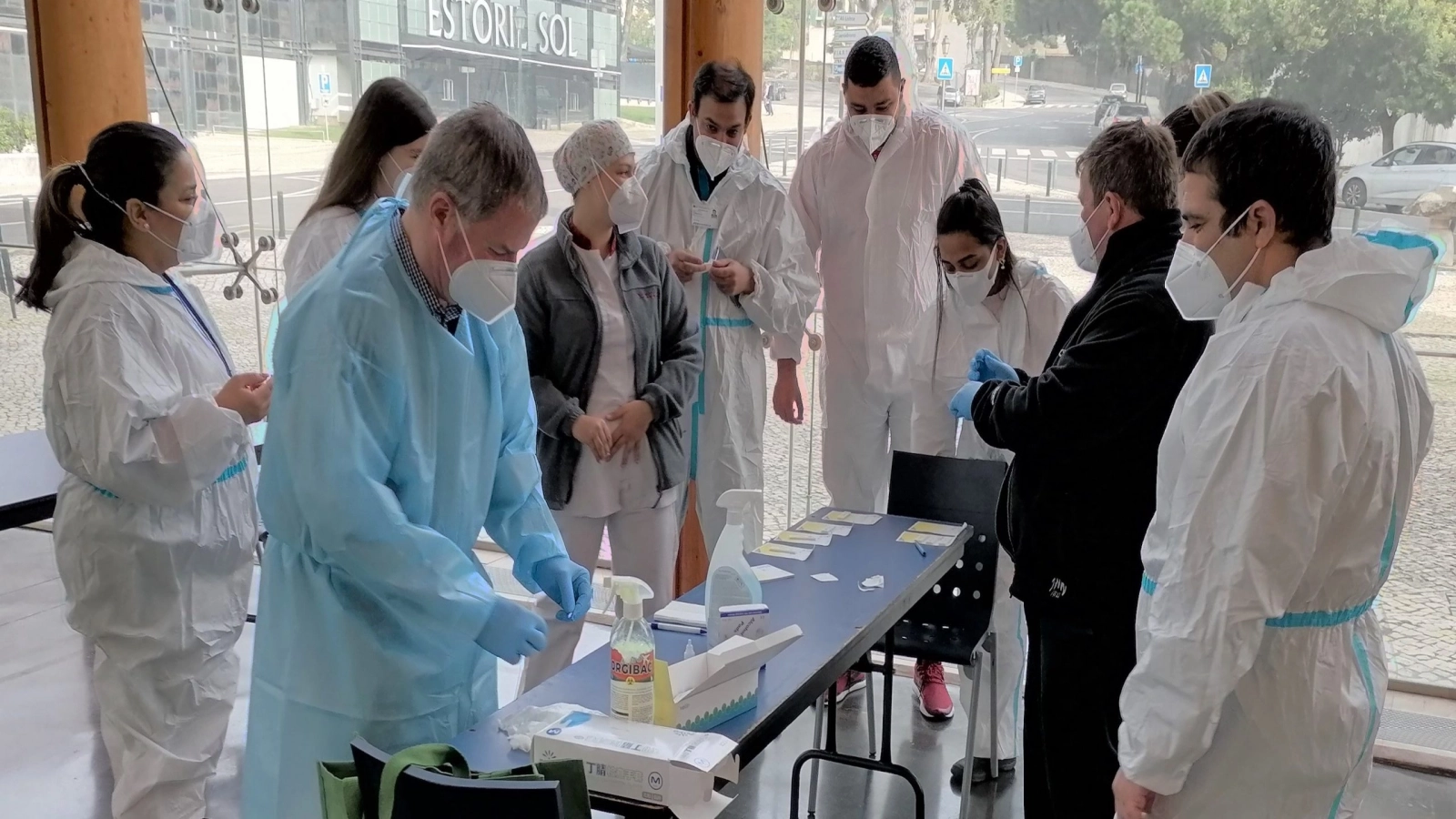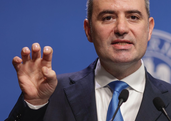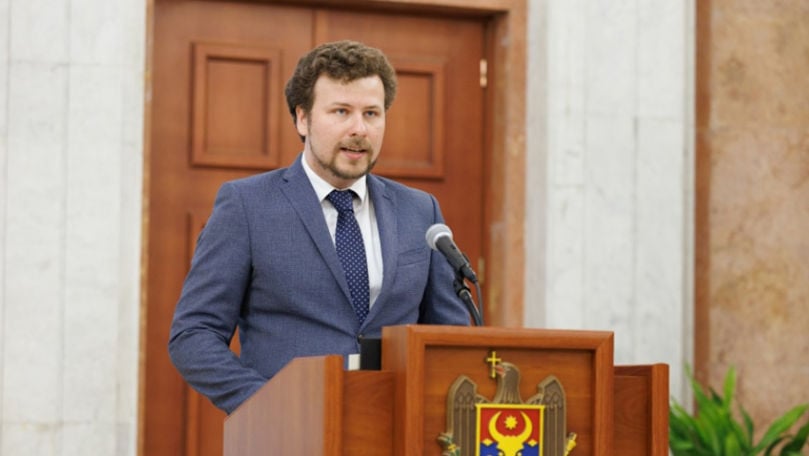The activity in the sanitary system (public and private) took place last year in over 63,000 sanitary units (52,000 sanitary units in urban and 11,000 in rural areas), according to data published on Thursday by the National Institute of Statistics (INS).
INS mentions that in 2020 the activity of the health and health care network was marked by the emergence and evolution of the COVID-19 pandemic and, consequently, by the measures of the central and local authorities to prevent the spread of the virus.
By main categories of units, the health network had, in 2020, 535 hospitals, compared to 532 hospitals in 2019; 150 units assimilated to hospitals that offer only day hospitalization services or outpatient and day hospitalization services, by 11 units fewer compared to the previous year (by some of these units' transformation into hospitals or by temporarily ceasing or suspending the activity of others); over 12,000 independent specialized medical practices, by 242 more units than in 2019; over 15,000 independent dental offices, by 108 more units than in the previous year; almost 11,000 family medicine offices, down by 214 offices compared to 2019.
The pharmaceutical network provided services through a number of 9,800 pharmacies, drugstores and pharmaceutical points, down by 76 units compared to 2019. Of the 685 hospitals and units assimilated to the hospitals that operated in 2020, only 347 are large medical units (with more than 100 beds), while 258 are small medical units (with fewer than 50 beds).
According to the INS, primary medicine, provided through the network of family medical offices, is the population's first contact with the health system, both for diagnosing and treating diseases and for performing preventive medical examinations. Most family medicine practices operated in urban areas, 6,400 practices compared to 4,300 practices in rural areas. In rural areas, a family medicine practice has 1.3 times fewer inhabitants (belonging to the resident population) compared to an urban practice.
Specialized outpatient medical care is provided by specialized units such as specialized outpatient clinics, medical and dental centers, polyclinics, diagnostic and treatment centers, etc., units that are located mostly in urban areas.
The network of independent medical practices and that of independent dental practices - part of the outpatient healthcare system - is also located mostly in urban areas.
While in the urban area there were 12,000 independent specialized medical practices, in rural areas their number was 22 times lower (only 533 offices). Consequently, the average number of inhabitants who returned to an independent specialized medical office was 19 times higher in rural areas than in urban areas.
In 2020, there were only 0.6 independent specialized medical offices per 10,000 inhabitants in the rural area (as in 2019) compared to 11.2 practices in urban areas (11.0 practices in 2019).
According to the INS, the 685 hospitals and units assimilated to hospitals had, in 2020, 134,700 beds for continuous hospitalization (124,500 beds in urban areas and 10,200 beds in rural areas) and 9,600 hospital beds for daytime hospitalization (only 380 beds in rural areas).
In 2020, hospitals and similar units provided inpatient services to 2.6 million cases of continuous hospitalization and 3.2 million cases of daytime hospitalization, compared to 2019 when 4.3 million patients were treated, both with continuous hospitalization and daytime care. From the point of view of bed insurance, most hospital beds (132,000 beds, accounting for 91.6%) were made available to patients in large hospitals (units with over 100 beds each), 7,000 hospital beds (4.9%) were available in medium-sized hospitals (units with 50-99 beds), and 5,000 beds (3.5%) in small hospitals (with less than 50 beds).
In 2020, as per the Order of the Minister of Health no. 555/2020 on the approval of the Plan of Measures for the preparation of hospitals in the context of the COVID-19 epidemic, was established the network of hospitals and units assimilated to hospitals treating patients having tested positive for COVID-19 and support units for patients having tested positive for COVID-19 or under suspicion of being infected. These measures have strongly influenced the activity and resources of hospitals, the structure of beds on specialties being one of the relevant indicators for the analysis of the impact of this period on hospital units.
Thus, a number of 21,123 beds for continuous hospitalization were allocated for the treatment of COVID-19 patients, representing 15.7% of all beds for continuous hospitalization. Of these, most were distributed to the infectious diseases specialty, representing 27.4% of the total beds COVID-19, respectively 83.6% of the total beds allocated to this specialty and to the pulmonology specialty, accounting for 13.4% of the total COVID-19 beds, respectively 34.3% of the total beds allocated to this specialty. Within the ICU wards, a number of 1,489 beds were allocated for patients with COVID-19, representing 7% of the total COVID-19 beds and 26% of the total ICU beds.
The public sector took over the most important part of the COVID-19 patient care activity, 98.4% of the allocated care beds allocated to COVID-19 belonging to public hospitals, and the private sector contributed to the care of COVID-19 patients with 342 continuous care beds.
From the point of view of providing medical staff, in 2020 the health system had 65,700 physicians, up by 2,400 compared to 2019; of 18,500 dentists, up by 1,500 dentists compared to 2019; of 19,500 pharmacists, up by 1,400 pharmacists compared to the previous year; of 152,700 personnel with average health training, up by 2,400 compared to 2019 and of 73,900 auxiliary health personnel, up by 1,600 compared to 2019. In 2020, a number of 2,300 physiotherapists (100 more than in 2019) and 16,800 nurses with higher education (600 more than in 2019) provided medical care in the units of the public and private health system.
By gender, the medical staff is mostly made up of women, the share of women among doctors and dentists being 70.5%, respectively 66.2%, and among pharmacists 89.3%.
In 2020, compared to 2019, the number of doctors (except for dentists) increased by 2,437, the most obvious increases being directly correlated with the COVID-19 pandemic and highlighted by increases in the number of specialists in the main medical specialties involved in the treatment COVID-19 patients and in the activities of managing the spread of the virus.
The medical specialties that registered the largest increases in the number of doctors, compared to 2019, were: infectious diseases, where the number of doctors increased by 11.5%, anesthesia and intensive care with an increase of 8.5%, epidemiology, with an increase of 10.3% and pneumology, with an increase of 4.9%. The doctors specialized in laboratory medicine whose number increased by 6.3% compared to 2019 and the doctors specialized in public health and health management whose number increased by 21.8 % essential also contribution in the diagnosis and management of the pandemic.
The distribution of health personnel by areas of residence is determined by the territorial distribution of health units, maintaining the existing major discrepancies.
Out of the total number of doctors, about one fifth were family doctors, almost two thirds of them working in urban areas. In 2020, as in the previous year, the discrepancies by area of residence regarding the provision of the population with medical staff are highlighted by the higher number of inhabitants (belonging to the resident population) who returned to a medical-sanitary framework, as follows: in rural areas there were by 9 times more inhabitants per doctor (1.6 times more inhabitants per family doctor), 6.4 times more inhabitants per dentist and almost 4 times more inhabitants per pharmacist, compared to the environment urban, reports agerpres.
































Comentează